- Popular Post
-
Posts
12,753 -
Joined
-
Last visited
-
Days Won
175
Content Type
Profiles
Forums
Gallery
Events
Blogs
BMT Wiki
Collections
Store
Posts posted by Rob
-
-
Decided last evening to plug my R-612ST as it was going to be well below zero. Turned out it only got to minus five degrees. When it was minus two degrees this morning I jumped up in the truck, turned the key and it roared to life as if it were 90 degrees outside. Deciding to let it run for a few minutes to warm, I went to the front of the truck to unplug the cord and noticed smoke coming from the receptacle in the headlamp panel. A good heavy 12ga power cord too. No damage to the truck but if it would have went much longer, it could have been a problem. The cord was plugged into a GFIC which did not trip so not a direct short for certain. I'll get a photo of the cord receptacle when back out to the shop as didn't have my phone with me at the time.
I'll have to meter that heater element as it's never been a problem in the past but this could have been catastrophic had I not noticed it.
-
Rebuild those air cylinders while it's apart; especially the reverse cylinder which hangs up often as the sealing rings wear.
-
You're right but barely short is close enough.
-
- Popular Post
- Popular Post
Truck is out of the running. I spoke with the prior owner after promising anonymity and was informed the oil cooler started putting coolant into the oil and the engine started to lightly "knocking". After being towed back to the dealership, it was traded on another truck for his camper, not a car as I was also told. This was last August. Also, this was in San Antonio, TX and not central Illinois as I was lead to believe.
"Snowbird"? Nope; never been to Illinois except touring Chicago many years ago so even that was a lie. This truck is obviously an auction purchase they know absolutely nothing about. Been around cars long enough to know some of the shenanigans that take place but this one really "takes the cake".
I've learned lots on this engine and am grateful for the knowledge gained as I'm now a lot less hesitant to consider a 6.0ltr engine powered truck.
And it all started when I snapped a photo of the vin number to do some investigating of history.
Thanks a bunch to all whom responded as I really appreciate it.
-
 4
4
-
This one is seemingly panning out to be an honest unit yielding good service to the prior owner. Unless something major falls out from the deal, I'll wind up with it.
Been reading a lot on the internet today about these engines and they really don't seem too bad at all; lot's of misdiagnosis seems to be a common trait. Given the way the coolant flow is through the engine oil cooler, followed by the EGR cooler, it makes sense to me to replace both rather than just the EGR cooler itself only. I've seen my fair share of bad water pumps over the years that don't leak externally also, so I'd think it best replaced when the system is opened up.
-
Euell Gibbons would prefer to boil brake shoes to preferred tenderness, then a dash of parsley flakes over the top, with a side of "Grape Nuts" and he'd be set.
-
I know several folks whom have had excellent service from their 6.0 engines and with exception of one, they have all been stock. Also know another guy whom purchased a new "King Ranch" F-350 and couldn't keep it out of the shop and he was not any kind of abusive to the truck. That one was traded in on a Dodge before it was a year old.
This truck does appear to originate from San Antonio, TX and had quite a bit of dealer service work there too. Mostly routine, and recalls etc. No real indicators it was a problem unit although the EGR cooler was replaced, and turbocharger cleaned. I assume these two are related as soot buildup would be the cause. Nothing found relating to the oil cooler for the engine. Almost all of these items are listed under warranty repairs so cannot ascertain from the information if anything was done in the aftermarket, or in Illinois. Everything listed shows to be completed in Texas.
-
I'm anxious for them to give me the okay to come back over so I can get a floor jack under the suspension points, check for hot start oil bleedoff in the injection system, sluggish ramp for the turbocharger, and "whistle" from cracked up pipes in the exhaust. This of course with the degas tank for leakage and "froth" to the cooling system.
Nice looking truck for sure although somewhat plain in appearance. I like it though as my usage is more work than trying to fit in amongst the masses.
Been driving my daughter's Toyota Corolla, (extra car) for almost a year since both "Krusty" and my 99 Durango shit the beds, (both rust related) till I could find a suitable replacement. $60K+ is not a reality for me in a pickup truck so in reality I've been slipping money back into my 57 B-61 as a replacement for "Krusty" and may just purchase a later model Jeep Grand Cherokee if this truck doesn't work out favorable.
-
Agree but it does have manual hubs. Those vacuum shift servo cylinders if not exercised routinely were often frozen in place when needed. Used to change a bunch of them along with automatic hub assemblies. GM favored the electric shift ones and they were trouble also; but only when it was needed.....
-
This one is 4X4. Old "Krusty" was 2WD and I'll not have another dually pickup that is not 4X4.
I agree the engine is of sound design but I've seen dozens with oil, and EGR cooler problems over the years and these if let go can cause catastophic failure. Only in Ford products however; never International so has to be something with the Ford emissions design features.
These of course only my observations and in no way protrayed as fact as I'm not an expert.
-
2 minutes ago, h67st said:
Looks to be in good shape for 189k. From past experience, if someone takes good care of the body and interior, then that bodes well for maintenance also.
Hi Carl;
Yes, I agree. It has 5th wheel rails but no gooseneck ball so probably a camper toter all it's life. These engines were "hit and miss" but keeping things maintained was paramount. The basic engine is very sound but the ancillary items tacked on by Ford could be problematic.
No rust I could see at all which was a surprise. No dealership "coverup" either such as wheel arch flares, spray in bedliner, contrasting color on the rockers, etc..... Obviously not from Illinois, or Ohio.....
-
 1
1
-
-
Sure sounds poignant of the country today and the current political "Agenda":
-
- Popular Post
- Popular Post
Found this truck as a possible candidate to replace my trusty, but crusty old Dodge which I've been forced to removed from service. The frame has literally rusted in two and the truck is no longer safe to operate; nor worth the effort to repair.
I've located this truck which is a 2007, and supposedly from Texas. No other history than that I'm afraid. The selling dealership only knows it is a new car trade and has no history. Odometer shows 189K so one of the better 6.0 diesels from what I've heard and read. It did start right up cold at -2 degrees yesterday but I did not drive it. I'm told it has yet to go through their shop for checkover as it's just been received so not ready to sell it yet.
I know these diesels can be problematic if updates have not been done and maintenance routines are kept strict. Also I feel front ends are originally weak but aftermarket parts take care of this. I'm concerned about the engine and whether it may or may not have EGR problems, sticking vanes in the turbocharger, cracked or leaking degas tank, etc. I've not looked into any of this as well as a hot restart problem these are known for before upgrades. I have the vin and going to speak with a couple of Ford dealerships to see if anything can be learned for history today but that won't do much for the aftermarket. The selling dealer tells me he'll get the information from the original owner for me to speak with also.
Here are a couple photos. Very clean truck and shows honest. I'm wanting four door for the expanding family and a standard cab pickup is just too small any longer. Length of course does not concern me.
Any advice or wisdom to share?
Thanks,
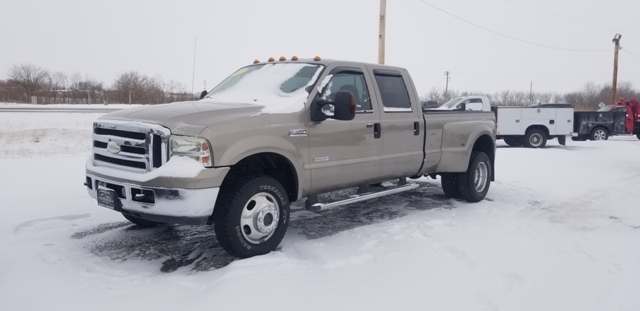
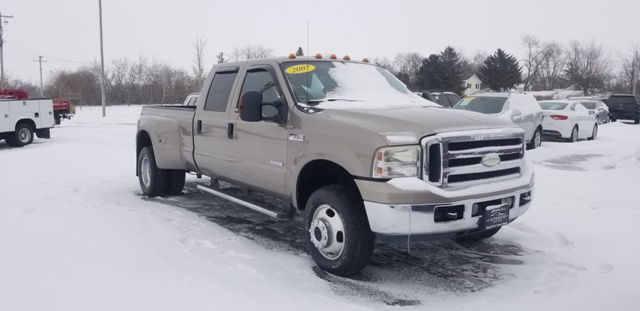
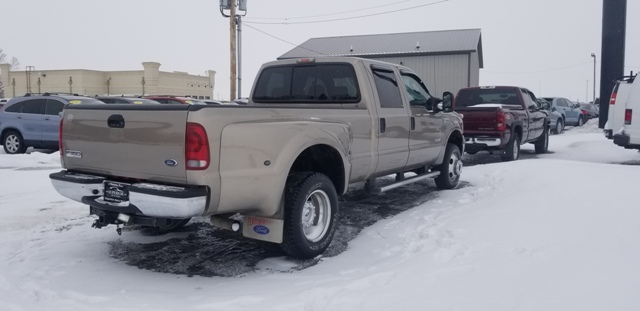
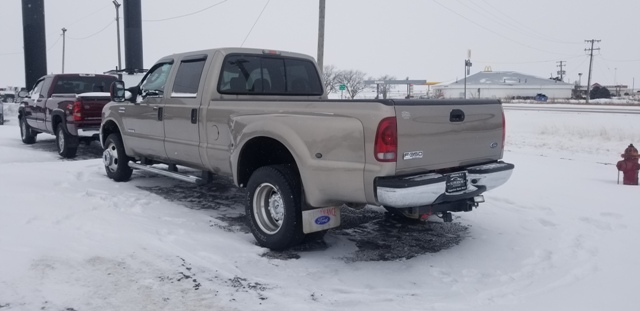
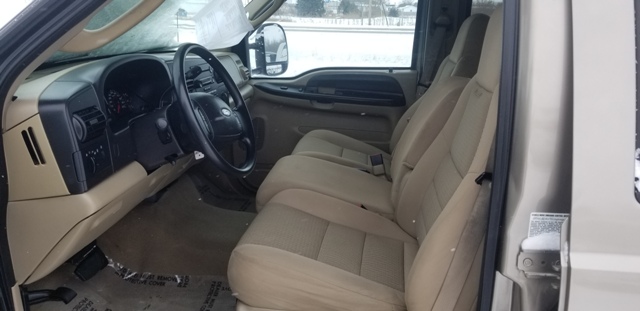
Not the "showiest" damned thing, but if proven reliable it will fit the need as I need a work truck.
-
 3
3
-
Hard to say for sure but not hard to set an angle table to a certain degree and plunge cut the bore with final reaming to size. Only seen videos of beams being manufactured but they are run in jigs and the operation is quick on the manufacturing.
-
 1
1
-
-
When you say relay, are you referencing the relay in a junction box, or magnetic switch mounted to the starter? Jumper the one on the starter itself which is what everyone calls a "solenoid" which it actually, is but it's actuated by a magnetic contactor, or switch.
Post up a photo of where you are trying to "jumper". Post one of the electrical end of the starter motor also where the battery cables and wiring connect.
-
-
Yes, Midland. Easy to replace and I feel better than the Bendix 501 series as the unloaders for the valves can be serviced without removing the head.
-
17 hours ago, Vladislav said:
Rob,
I have removed FAW537 axle from my R-model and also had FAW538 off another R-model as a spare. I had to use that spare one for the truck so investigated both of them relating king pin hole angle, straightness and even the weight. And now I can state both of those were almost similar and absolutely symmetric face to back. King pin holes were bored straight from the top of the beam having zero angle to the drive direction. Castor angle establishes by the springs hanged to the chassis rails at a certain angle and also by wedged pads put between the axle beam and springs. So I bet no difference in steering or handling the road if you put the beam backwards. That's for a R-model. A few years back I had similar experience with my military Mack model NR. Also had two similar beams and chose one of to use. I well remember I found no difference face to back excepting that marking at the front of the left spring pad and even put my own mark for the drive direction of the truck just for any reason.
Hi Vlad;
I can't answer directly for the FA-537, or FA-538 as never have rebored either. I have rebored and installed sleeves into the FA-512, and FA-522 series in early R, and B series in the past and these borings are not perpendicular to the horizontal plane and it does seem they have a slight positive, (top more towards the rear) bored hole. What I'm saying is the top of king pin is tilted out and rearward from the bottom. Much of this follows the "Ackerman" principle of steering geometry. However, it is possible being the FA-53X series was designed more for the balance between manual, and hydraulic power steering where the FA-512 really was geared more towards the manual types in use then. I don't know.
I have rebored several Rockwell axle ends installing "Stemco" inserts to correct for "beaten" king pin bores several times. Those are usually bored with a slight positive caster angle, (top of pin to the rear) and an adjustable sleeve pressed in. Caster plates are used often for setting the final angles meaning slightly rotating the axle beam under the springs to achieve the correct angle. It gets tricky when the actual beam needs twisted to attain equal angles on both sides of the truck. Heat, and hydraulic force are your friends here.
-
- Popular Post
8 hours ago, tjc transport said:back in the good old days, we never realized how hard it was not having power steering, air conditioning, or heat.
the lack of those items kept us in shape.
i remember many a time having the truck in the lowest gear possible, and standing up in the cab to get a better grip on the steering wheel for more leverage to turn the wheels.
I still do that with my 51 A-40 dump truck when loaded. And I even got more ass than used to!!!
-
 2
2
-
 1
1
-
Could be a Bendix. or Midland. Can you post a photo?
-
 1
1
-
-
PAI markets a very good, complete maintenance kit for the compressors.
-
I like the Midland 1300, and 1600 series myself as the valves and head are very easy to service should maintenance be required.
Cost is about the same for a Bendix Tu-Flo 501 and a Midland also so six of one, 1/2 dozen of the other. Change or service your air drier with the compressor maintenance or replacement too.
-
 1
1
-
-
Although the axle will physically bolt in backwards, I'll wager it would really be an adventure to drive. You have steering angles which would all be incorrect. Negative caster where the original was positive. Incorrect camber for both sides of the truck. Steering axis inclination really out of kilter. Many of these angles are designed and machined into the axle, and spindle forging(s). King pin inclination for instance which is 7 degrees positive in this application. This is never neutral but rather positive meaning to top of the king pin is more to the rear than the bottom. Reverse the axle beam and you reverse the angle which directly affects caster, camber, toe out on turn, etc.
Naw, really don't think your axle is installed incorrectly myself as you would know it at very low speed and find it most likely uncontrollable at normal speed.
I've seen some of those axle stampings be quite faint over the years and obscured by rust/corrosion. You can usually find them with a heavy wire brush on a small grinder after you get the axle beam down to shiny. It is always preceded by "FA" and a number. Sometimes there is a hyphen after the "FA", sometimes not and just a number unless as Vlad has mentioned, been ground off for some reason.
-
Both Bendix, and Midland are time proven designs.




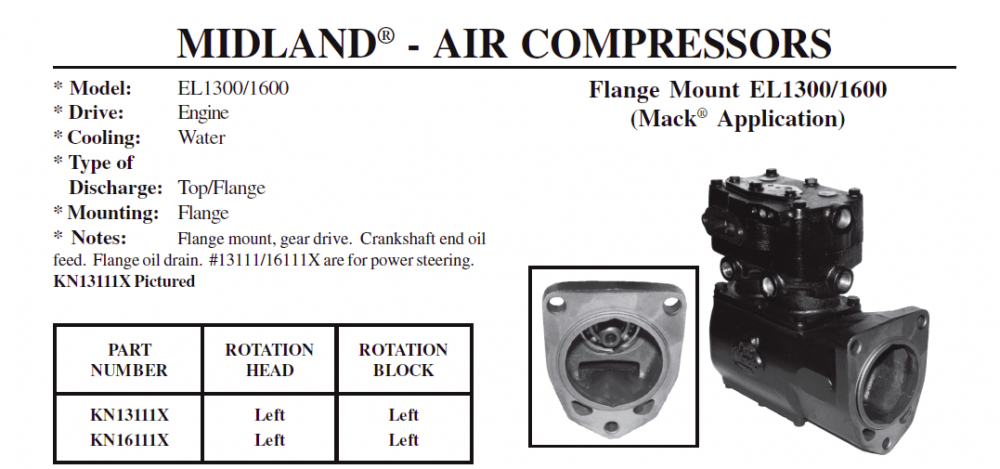

Just a few things:
in Odds and Ends
Posted